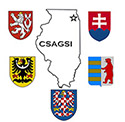Urban and Rural - Czech Connections
Not all Czechs left the "Old Country" for big USA cities
Barbor Barbour Bender Benes Benish Beranek Bilek Blaha Bouda Braun Brisky Bruha Bulin Casa Cejka Cepek Cervenka Chlup Chalupecky Churda Cisar Dedrick Denk Dvorak Fanta Franek Fronk Hagenah Hanzel Havlik Heidenreich Herbeck Herdlicka Hlasek Holack Holak Holub Hora Hotek Housner Hynek Janacek Janousek Jansky Jelinek Jindrick Jiricek Kardlicek Kaukl Klement Knadle Kolash Kolowrat Kosa Kouba Kratche Kretche Kucera Langer Lebansky Levy Libansky Linhart Liska Machacek Machovec Misliveck Nachtigal Nemec Novacek Novacheck Novy Obert Pack Palat Pech Pechan Pesik Picha Pisa Pisha Plachetka Pliner Pocepicky Popp Preslik Prucha Ptak Resac Rosol Rott Schroeder Schumacher Sebranek Sejk Shaker Shebeck Sima Sindelar Sinkule Skala Skarda Sladek Slama Snorek Soukup Stanek Staska Stekel Stepka Sterba Stowell Subera Suchoman Tydrich Urban Vanata Vanourek Verbsky Vitcenda Vlasak Vopata Vodak Vrbsky Wacha Wodak Wolf Wondrowitz Wopat Wopata Yansky Zoha
If you are looking over the above list of names, and have an interest in Czech genealogy, you might take a guess that this is a listing of family names for those buried in Bohemian National Cemetery in Chicago. They are actually an incomplete list of family names for those buried in Czechs National Cemetery in Yuba, Richland County, Wisconsin, the Bohemian Brotherhood Cemetery in Dilly (also called the Wopat Cemetery) (town now gone), the St. John’s Catholic Church and cemetery across the road), Vernon County, Wisconsin, the Bohemian Brotherhood Cemetery (also called Knadle Cemetery), Vernon County, Wisconsin and the Mount Vernon Cemetery, Hillsboro, Vernon County, Wisconsin.. The five small cemeteries (all are listed on http://www.findagrave.com) are located within approximately thirteen miles of each other. The names in bold are actually found in both Bohemian National Cemetery in Chicago and those little Wisconsin cemeteries.
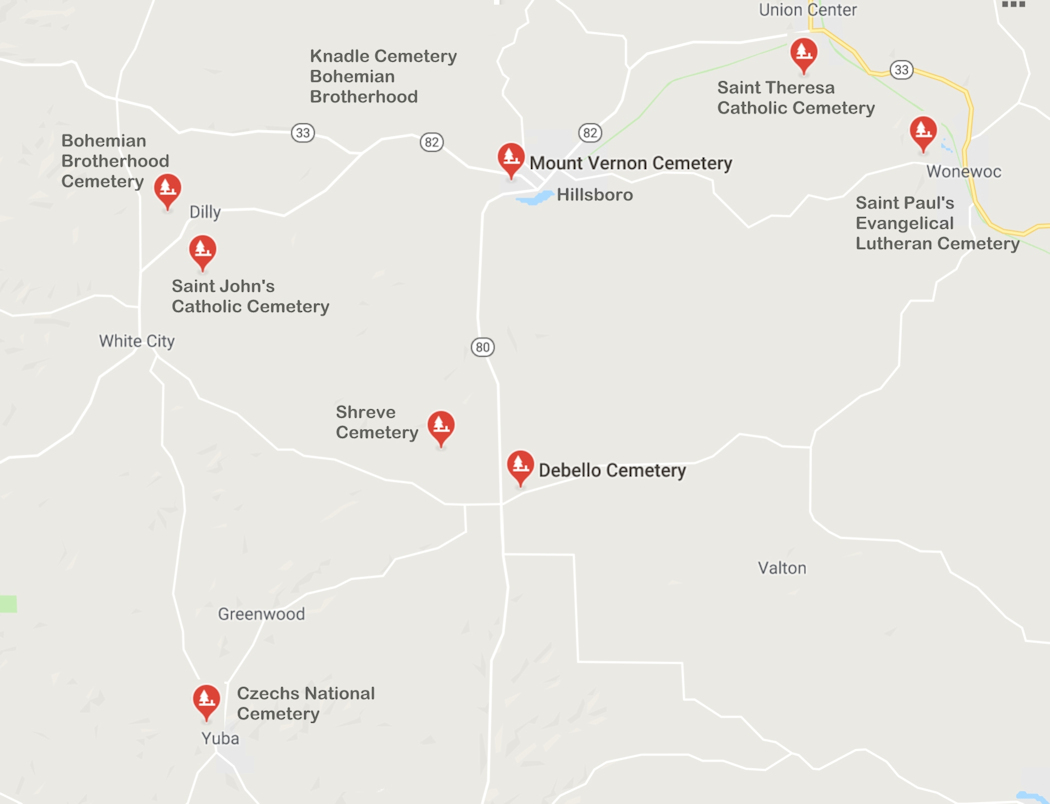
Map Above - Cemeteries described in this paper. Vernon and Richland Counties of Wisconsin are located west and south of Wisconsin Dells.
Hillsboro, Wisconsin is described as the Czech Capital of Wisconsin. The town hosts several Czech celebrations each year.

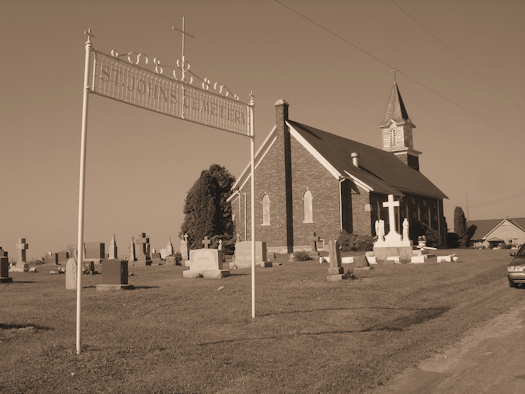
Image Above - Czechs National Cemetery, located near Yuba, Richland County, Wisconsin.
Image Below - Bohemian Brotherhood Cemetery, located across the road from Saint John’s Catholic Cemetery, Dily, Vernon County, Wisconsin.
Image Above - Saint John’s Catholic Church and cemetery, Dily, Vernon County, Wisconsin.
Image Below - Bohemian Brotherhood Cemetery (Knadle Cemetery) located outside of Hillsboro, Vernon County, Wisconsin.
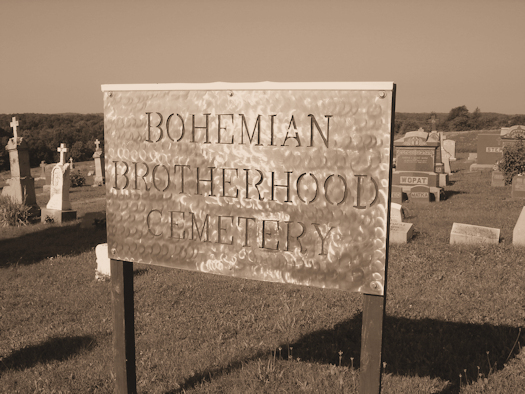

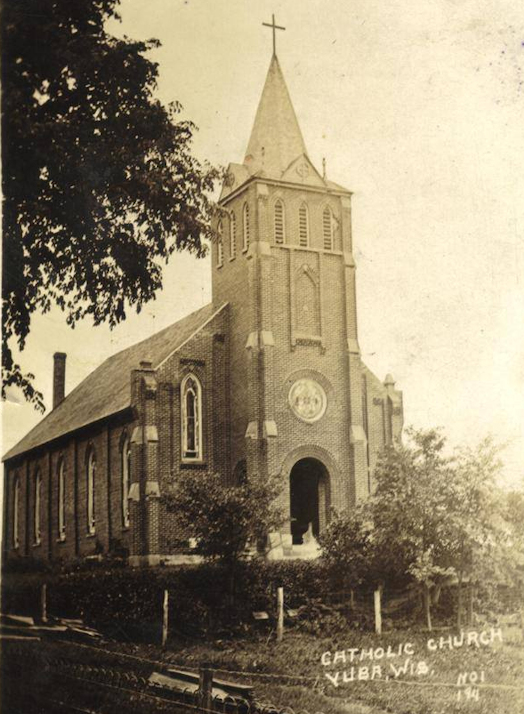
I was born in the big city. My father, along with most of those on his side of the family, was born on a farm in Wisconsin. He and his parents, along with several siblings, were born in Bohemia and migrated to the USA in 1863. For a while, when I was young, our family moved back to live on our farm.
I walked gravel farm roads to catechism school at Saint Wenceslaus Church, which first opened in 1908 in Yuba, Richland County, Wisconsin. I enjoyed many a grape soda at one of the little taverns in town. My father would speed up the car so we could get up Stanek’s hill without slowing down too much. The Janouseks, Dvoraks, and Knadles were close neighbors and harvest time help. Jeanette Dvorak was my elementary school teacher. Mr. Barbor had the combine which harvested the oats on our farm. Ed Janousek was the senior citizen of our area, with many a tale to tell. My father and uncles switched language to talk to most of them and discuss things or tell stories us youngsters were not supposed to overhear. I grew up with Kolaches and still would like to find as good a poppy seed pie as the ladies made on the farm.
When I was older, I lived in Chicago. It felt as though many of those same family names I remembered while living on the farm were rediscovered while living in the city.
Image Saint Wenceslaus Catholic Church in Yuba, Wisconsin - courtesy of Alan Picha - Hillsboro Historical Society
When I started to work on my family tree and visited cemeteries, such as the Bohemian National Cemetery, it reinforced my belief that nearly every farm family surname could be found in Chicago area cemeteries.
Not all Czechs left the old country to live and work in a large USA city. Many left the old country to settle and own farm land in the USA, something which many of them could never have done if had they remained in Europe. Over the years, I did discover that I had Czech ancestors who did both. My grandfather’s brother and his family, arrived before 1870, and would settle in both Chicago and the rural areas and small towns of Wisconsin. One branch of my father’s family sold most of the land for the use of the Czechs National Cemetery in Richland County. One branch of my family married in Wisconsin, moved, and settled in Iowa. They all were farm families.
While there are more, two adjacent counties in southwestern Wisconsin can serve as good examples of this. They are Richland and Vernon Counties (earlier name for Vernon County was Bad Ax).
Wisconsin became our 30th state on May 29, 1848.
While the first Czechs to reach Chicago occurred earlier, and that was also the case for other areas of Wisconsin, the first Czechs known to reach these two counties in Wisconsin occurred in the mid-1850s. An example of this is: Joseph Urban, the Albert Janecek family; the Anton Slama family, who arrived in New York City, December 14, 1854 from Port Bremen on the ship Bremen Bark Agen and Heinrich; and the Wenzel Holak family who arrived in New York City, December 28, 1854, from Port Bremen on the ship Meta. [i]
[i] "New York Passenger Lists, 1820-1891," database with images, FamilySearch (https://familysearch.org/ark:/61903/1:1:27R7-DNG: 15 April 2015), Anton Slama, 1854; citing NARA microfilm publication M237 (Washington, D.C.: National Archives and Records Administration, n.d.); FHL microfilm.

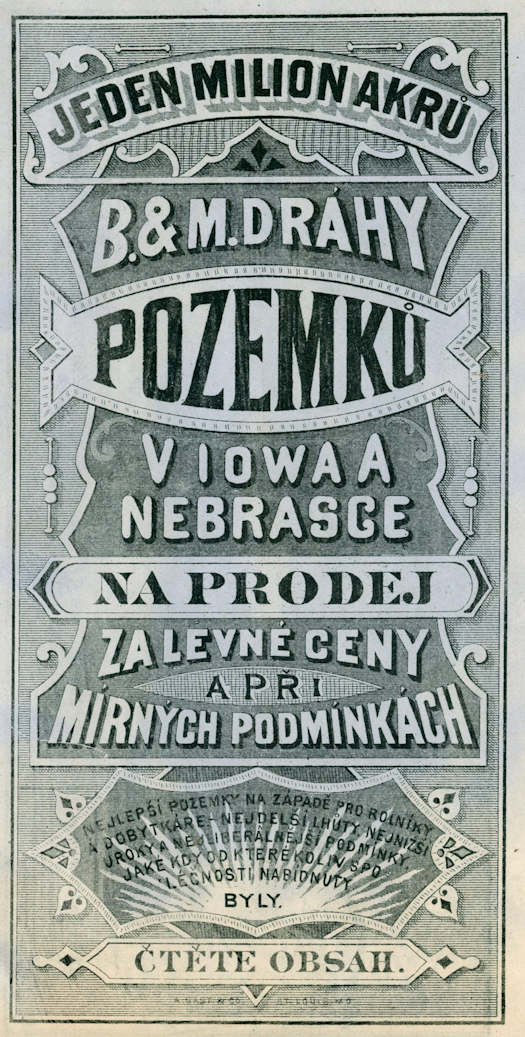
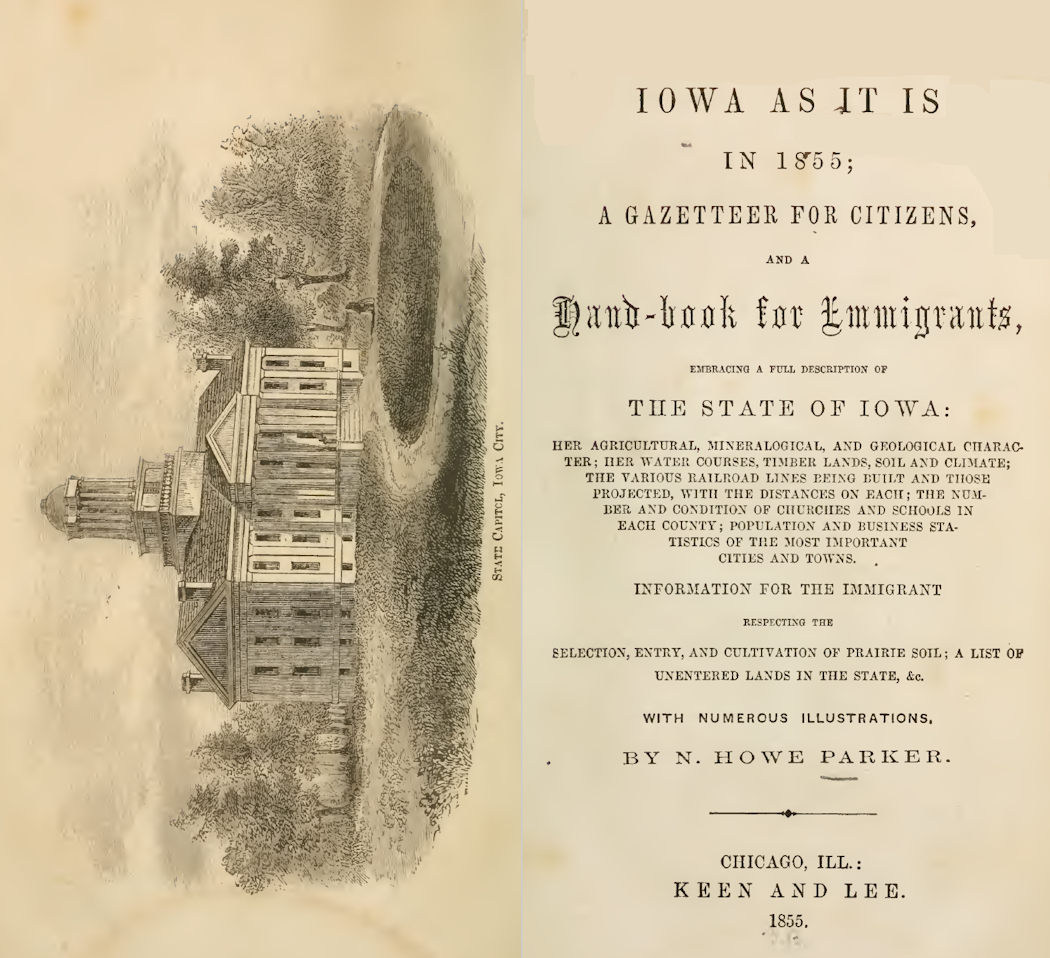
One book, Memoirs of Vernon County, also mentions that the first Bohemians to reach and settle in the area of Union, Vernon County, Wisconsin were the families of Joseph Barta, Wenzel Holak, Albert Janecek, and Anton Slama. They did so in 1855. [i]
By 1854, Ensign, Bridgman and Fanning, New York Publishers, already had printed maps of the new state of Wisconsin, showing Richland and Bad Ax (the earlier name for Vernon County) Counties.
Bicha, Nemecek and Capek describe events in Europe which influenced much of this early Czech migration. The Hapsburg Empire ended all remaining vestiges of serfdom, and the restrictions which were part of that, allowing Bohemians to emigrate beginning in 1848. [ii] [iii]
Published in 1920, Thomas Capek’s book “The Cechs in America”, describes further that it was local Bohemian politics and economic possibilities in areas other than in Europe, which spurred on this migration. Capek provides summaries of how shipping lines from Bremen and other ports were advertising and encouraging migration to the USA.
It would not be easy to reach these areas of Wisconsin during the 1850s. It appears that getting to Buffalo, New York and then by waterway to Chicago or Milwaukee were the best choices as in the 1850s few rail lines existed in Wisconsin. [iv]
Capek also provides an early description of Wisconsin: “The first farming communities sprang up in Wisconsin. This state possessed advantages over others which strongly appealed to the Central European. The climate, though severe with long winters, was salubrious and singularly free from those frequent and unhealthy changes which prevail farther south. The soil was adaptable to the raising of maize, rye, wheat, oats, and vegetables, all products with which the Cech husbandman was familiar. More-over, there was no fear of the humiliating competition with negro labor. Wisconsin’s attractions were widely advertised in German and Austrian newspapers. In the aggregate, it had the largest proportion of foreign citizens. Out of a population of 305,391 in 1850, there were 106,691, or more than one out of three, born abroad. The state (Wisconsin) commended itself to settlers in other ways. Taxes were low; one could become a citizen within one year. Good land could be bought at $1.25 an acre and the ground of poorer quality for less price than that.” [v]
[i] Rogers, Earl M. Memoirs of Vernon County, Wisconsin; including Each of the Different Towns, and a Genealogical and Biographical Record .Madison, WI: Western Hist. Assoc., 1907. 214. Print.
(Available Online - https://dcms.lds.org/delivery/DeliveryManagerServlet?dps_pid=IE3129239)
[ii] Bicha, Karel D. "The Czechs in Wisconsin History." Wisconsin Magazine of History 3rd ser. 53.Spring 1970 (1970): 194.
[iii] Nemecek, Paul. "History of Czech Immigration to the United States 1848 - 1914." Koreny, Journal of the Czech and Slovak Genealogy Society of Illinois 3rd ser. 14.June 2010 (2010): 3.
[iv] Capek, Thomas. The Cechs (Bohemians) in America: A Study of Their National, Cultural, Political, Social, Economic and Religious Life. Boston: Houghton Mifflin, 1920. 34-36.
[v] Ibid, 36-38.
In his doctoral thesis, John Cherney provides additional narratives on how Wisconsin promoted immigration to the state. “In fact, the writers of the state constitution framed the document in such a way that it encouraged foreign settlers to feel at home. Wisconsin was so eager to attract immigrants from Bohemia and other places in Europe, that they established a two-level canvassing system to publicize the favorable attributes the state could offer them.” [i]
The state maintained in New York City a salaried official, so called Immigration Commissioner, whose duty it was to seek to divert the flow of newcomers thither. This commissioner advertised extensively in the foreign language press, mainly German, sending besides, generous quantities of printed matter to points in Germany, Austria, and Switzerland.”[ii]
One of the pamphlets read: “Come! In Wisconsin all men are free and equal before the law….Religious freedom is absolute and there is not the slightest connection between church and state….In Wisconsin no religious qualification is necessary for office or to constitute a voter; all that is required is for the man to be 21 years old and to have lived in the state for one year.” [iii]
Cherney also comments on the pamphlet by writing: “The pamphlet further gained favor by assuring the Bohemian peasant that they would be free to practice their Hussite Protestantism. Also, the reference to the ease with which a Czech could earn the right to vote was no doubt a direct reference to the hedging of the Czech intelligentsia in securing the right to vote for the lower two classes of peasants, the nadenici and chalupnik. This point was so heavily emphasized in the circulars that one of them stated that “there is never an election in the state that does not put some, and very often many, foreign-born citizens into office. Indeed, there is no such thing as a foreigner in Wisconsin.” [iv]
[i] Cherney, John J. Wisconsin's Land for the Landless: Examining the Push and Pull Forces of Czech Immigration, 1848 - 1870. Diss. U of Wisconsin - Madison, May 1994.
[ii] Capek, 37-38.
[iii] Ibid, 38.
[iv] Cherney, John J. Wisconsin's Land for the Landless: Examining the Push and Pull Forces of Czech Immigration, 1848 - 1870. Diss. U of Wisconsin - Madison, May 1994.
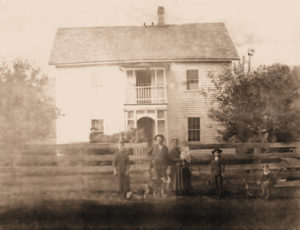 (Image – the Martin Slama farm. Image provided by descendants. Martin Slama was the son of Anton, and Martin sold land along the edge of the farmstead to create Czechs National Cemetery, located along the borderland of Richland and Vernon counties.)
(Image – the Martin Slama farm. Image provided by descendants. Martin Slama was the son of Anton, and Martin sold land along the edge of the farmstead to create Czechs National Cemetery, located along the borderland of Richland and Vernon counties.)
Phillip C. Braithwaite in his book, Yuba A History of a Wisconsin Czech Community along the Vernon and Richland county border describes how one early Czech immigrant (Joseph Urban – Phillip C. Braithwaite references his story “The Soldier”) was able to reach Wisconsin:
“And so we set forth on October 10, 1854 on a journey from our homeland. Several others and myself rode through Karlovy Vary by railroad, the trip lasting three days. Others traveled to Prague, and we came together again in Bremen. Here we had to wait 4 days for a boat, so we were in a fine fix. We had to pay 42 Bremen tolars for the crossing. We finally managed to get on the boat, we rocked on the sea until October 19, and after many storms and other difficulties, we arrived in New York on December 16. (http://www.ancestry.com) lists in consecutive order on the ship registry Joseph Urban and eleven other Bohemian families, all later listed on Vernon or Richland County records, arriving on December 14, 1854 from Port Bremen to Port New York City on December 14, 1854 aboard the ship Bremen Bark Agen and Heinrich.)………..Putting up $5 in earnest money, we obtained tickets (train) to Chicago, although later we had to pay an additional 12$......We stayed for two days in Chicago, for we had no baggage there with us. There was no train to Milwaukee, our destination for the time being, and no boat, since the lake was frozen. Consequently we had to travel by a different route, in ordinary carts to Janesville, and from there to Milwaukee, where we arrived on the day before Christmas.” [i]
Phillip C. Braithwaite also describes how two early Czech settlers (Joseph Barta and Wenzel Holak) were among the first to walk for several days to purchase their own farm lands in the area. Urban, Barta, Holak and others traveled to Madison in an attempt to purchase land. There they found the lands available to be too expensive for them to purchase. Later they traveled to Richland County in another attempt to purchase land. Finally they walked to LaCrosse and purchased land in Vernon County (called Bad Ax at that time). [ii]
Bureau of Land Management Patent records indicate that Barta alone, and later Barta with Holak, purchased land through the La Crosse office.
[i] Braithwaite, Phillip C. Yuba - A History of a Wisconsin Czech Community. Richland Center, Wisconsin: Hynek Printing, 1998. 9-16.
[ii] Ibid, 15-16.

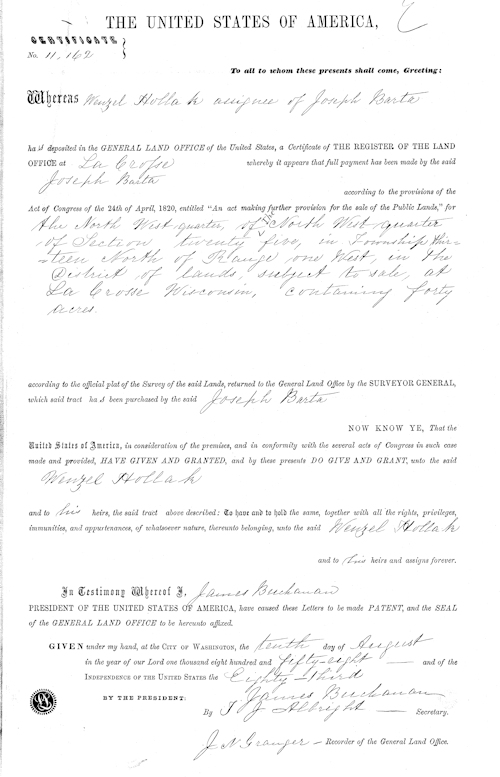
Joseph Barta purchased land in 1857,
Joseph Barta as an assignee purchased land for Wenzel Holak in 1858.
The above two documents come from the Bureau of Land Management web site:
https://glorecords.blm.gov/search/default.aspx
For land purchased directly from the Federal Government, you may be able to find many of those records at the above web site.
 A summary of information from the Vernon County Historical Society web site suggests that Czech immigration began in the 1850s with many of the Czechs coming from the Plzen area of Bohemia. [i]
A summary of information from the Vernon County Historical Society web site suggests that Czech immigration began in the 1850s with many of the Czechs coming from the Plzen area of Bohemia. [i]
A summary of the Bicha publication supports this:
“Contemporary with the La Crosse foundations, Czech families from the Plzen (Pilsen) region began to occupy the isolated ridge and valley country of northern Richland and southern Vernon counties, establishing themselves around the village of Yuba in Richland County. Their principal settlement. Champion Valley, attracted other immigrants and by 1861 nineteen Czech family names were represented in the valley. As an isolated outpost, household manufacture was employed for most purposes, and the men of the community made an annual journey to Lone Rock to mill the year's wheat and to convert surplus corn, maple sugar, and some butter into tools, coffee, and cloth. Dairy products posed a major disposal problem for the community, and until the Yuba cheese factory commenced operations in 1892 the products of the butter churn often served as a lubricant for machinery. Yet the colony flourished, and by 1900 some 233 families of the first and second generations farmed the ridges, bluffs, and valleys of the Yuba area.” [ii]
[i] http://www.vernoncountyhistory.org
[ii] Bicha, 197.
South Dakota
Excerpt from Czech Immigration to South Dakota by Michael Cwach, Yankton South Dakota, 2003. (https://svu2000.org/conferences/2003_Iowa/03.pdf)
“It was a group of Czechs in Chicago that formed a Czech Agricultural Society that began to initiate the Czech settlements further west, beyond Iowa or Minnesota. The society was created in a tavern belonging to Frank Bem, at the corner of Canal and Taylor streets in Chicago. Me Bem would lead the first group of permanent Czech settlers to what is now South Dakota in 1869. Soon four thousand joined the Agricultural Society from Czech settled areas in the East. The money collected was used to send Frank Bem, Frank Janousek, and Edward Strausse to Kansas in the winter of 1868 to see if there was any suitable land there. Apparently there was not, because after their return they set out again in the spring of 1869 to investigate the possibilities of suitable land in northeastern Nebraska. They wrote back to Chicago that there was a veritable ‘land of plenty’ about forty miles west of Niobrara, Nebraska with pine forests, a place where there would be a flowing stream on every farm. They also wrote that the first expedition was to leave Chicago on May 1, 1869. This letter from the scouting party was written as if this party had actually visited the forests and beautiful streams, but in fact it did not even get as far as Niobrara. Nevertheless, the first expedition of the Czech Agricultural Society set out with members from Chicago (Alois Chladek, Tadeas Pishek, John Pishek, Daniel Cap. Cyril Jandus, Joseph Hrdlicka) from Cleveland (Frank Nedved) from LaCrosse, Wisconsin (Frank Fejfar and his daughter) and Joseph Pechan who had just come from Bohemia with his family. Arriving in Sioux City, Iowa by train, they bought provisions and livestock, such as oxen, farm implements, plows and wagons and crossed the Missouri River to Covington, Nebraska.”
Cwach’s article goes on to describe that the chosen location was not as advertised and the adventurers, some left, but most eventually ended up South Dakota.
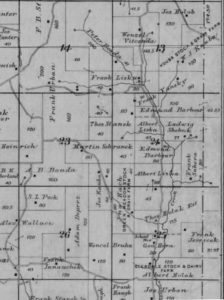 Czechs, who settled in urban areas, most likely would rent some form of lodging or purchase a home of their own. Tracing the movement of urban Czechs is often done by referencing census records, birth/baptism, marriage and death records and obituaries. I have found some of the original dwellings using county assessor records and images posted at their sites.
Czechs, who settled in urban areas, most likely would rent some form of lodging or purchase a home of their own. Tracing the movement of urban Czechs is often done by referencing census records, birth/baptism, marriage and death records and obituaries. I have found some of the original dwellings using county assessor records and images posted at their sites.
Besides renting, Czechs in rural areas could also purchase land from someone else. Most of those records are available for research at the county seat for each individual county. They also had the opportunity to purchase land directly from the USA government. This practice was encouraged when the various Homestead Acts were established by the federal government. One nice thing about rural Czechs is also the ability to view their plots of land on plat maps. [i] Some of their land purchases can also be found on line. I have visited the Richland and Vernon County offices to find those and other related documents.
Plat maps for townships and counties can be found in a variety of locations online. Some with a simple search, others are available through local, and county historical societies. I found plat maps for my townships of interest through both of the usual methods.
[i] Cook, Dennis J. "1874 Richland County Plat Maps." 1874 Richland County Plat Maps. N.p., n.d. Web. 29 Nov. 2016
 Today, Yuba, Wisconsin is a small town with less than 100 inhabitants. Saint Wenceslaus Church is no longer used and the cheese factory has been closed for decades.
Today, Yuba, Wisconsin is a small town with less than 100 inhabitants. Saint Wenceslaus Church is no longer used and the cheese factory has been closed for decades.
Towns such as Dilly may appear on some maps, but they are more of an intersection for several roads and may still have a house or building still standing, and little else.
All of the cemeteries mentioned still remain and are still maintained.
Hillsboro, Wisconsin has more than 1000 inhabitants. Many more are there at least once a year when “The Czech Capital of Wisconsin” celebrates its Czech heritage with a Cesky Den festival.
Czech names are still found on businesses, and farmsteads. The Amish have become the newest group of people to move into the area, farming many of the old farms in the traditional manner one would expect, but providing farm products to supply the increasing demand for organic foods.
Internet resources available for genealogy research related to Richland County, Wisconsin
http://www.wisconsinhistory.org/ - Excellent resource with marriage records and more, images, online texts related to Wisconsin history.
https://familysearch.org/wiki/en/Richland_County,_Wisconsin_Genealogy
http://www.usgenweb.info/wirichland/
http://freepages.history.rootsweb.ancestry.com/~richlandcowi/
http://www.rootsweb.ancestry.com/~wirichla/
http://content.mpl.org/cdm/landingpage/collection/rchr/ - Richland County Digital History Room
http://wsgs.org/cpage.php?pt=75 – Wisconsin State Genealogical Society
https://www.facebook.com/Richland.County.History.Room/
Internet resources available for genealogy research related to Vernon County, Wisconsin
http://www.wisconsinhistory.org/ - Excellent resource with marriage records and more, images, online texts related to Wisconsin history.
https://familysearch.org/wiki/en/Vernon_County,_Wisconsin_Genealogy
http://www.vernoncountyhistory.org/
http://www.vernoncounty.org/GIS/
https://archive.org/stream/historyofvernonc01spri/historyofvernonc01spri_djvu.txt - Full text of "History of Vernon County, Wisconsin
https://archive.org/details/historyofvernonc00spri - History of Vernon County, Wisconsin, together with sketches of its towns, villages and townships, educational, civil, military and political history; portraits of prominent persons, and biographies of representative citizens; history of Wisconsin.
https://dcms.lds.org/delivery/DeliveryManagerServlet?dps_pid=IE3129239 - Memoirs of Vernon County, from the earliest historical times down to the present (1907).
https://www.facebook.com/VernonCountyHistoricalSociety/
http://www.czgen.com/index.php?ctype=gedcom&ged= - Genealogy of Czech immigrant communities, mostly in Vzgen - Genealogy of Czech immigrant communities, mostly in Vernon County, Wisconsin, and surrounding area (born 1915 or earlier).
https://www.facebook.com/groups/1397444673853761/ - Vernon-Richland County, WI Czech Family History
www.liskasfromkralovice.com/liskavopat/recordslisting.asp -
Web sites for Midwest states – early settlement
Czech Immigration to South Dakota by Michael Cwach, Yankton South Dakota, 2003. (https://svu2000.org/conferences/2003_Iowa/03.pdf)
South Dakota Resources – Bibliography of Czech Culture – South Dakota (Very extensive listing) https://www.sdhspress.com/journal/south-dakota-history-21-2/dakota-resources-a-bibliography-on-czech-immigrant-culture-in-south-dakota/vol-21-no-2-dakota-resources.pdf
Czech Catholics in Nebraska - https://www.unl.edu/czechheritage/churches.pdf
Czech Contributions to the Progress of Nebraska - https://www.unl.edu/czechheritage/contributions.pdf
Nebraska and Kansas Settlers from 1891 – 1895 – Each county information, most with a map, is listed separately
https://www.unl.edu/czechheritage/Margie_sobotka.shtml
Czechs in Nebraska – Book online in Sections, county by county.
http://www.usgennet.org/usa/ne/topic/ethnic/czechs/contents.html
NEGenWeb Project Resource Center On-Line Library BOOKS
http://www.usgennet.org/usa/ne/topic/resources/OLLibrary/index.html#mardos
University of Nebraska at Lincoln – Czech Heritage Project – This is a really good website
https://www.unl.edu/czechheritage/Gallery.shtml
NEGenWeb – Czechs in Nebraska
http://www.usgennet.org/usa/ne/topic/ethnic/czechs/cz-pg19.html
Nebraska Czechs Web Site
http://www.nebraskaczechs.org/
History of Nebraska – The Czech American Experience
https://history.nebraska.gov/blog/czech-american-experience
Bohemians in Nebraska
http://www.usgennet.org/usa/ne/topic/resources/OLLibrary/collections/vol19/v19p140.htm
